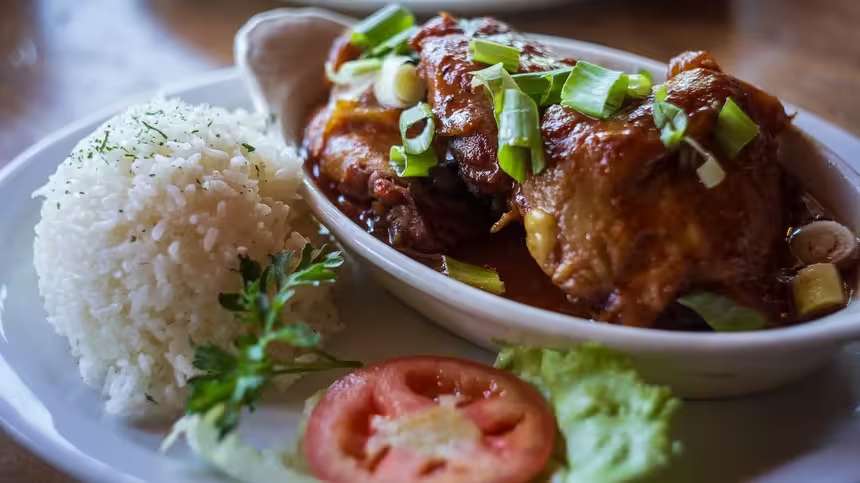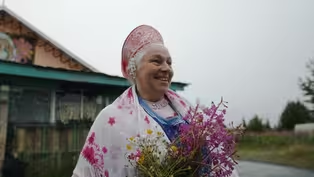
What is Alaskan Ice Cream?
Clip: Episode 1 | 5m 11sVideo has Closed Captions
Pati Jinich makes Alaskan Ice Cream with indigenous community liaison Anna Sattler.
Foraging is one way Indigenous Community Liaison Anna Sattler holds on to her Yup'ik traditions. She takes Pati Jinich foraging for berries outside of Anchorage. As they gather berries Anna shares insights on what it’s like to be native in Alaska, why traditional practices still matter, and how she is working to keep her culture thriving. They use their bounty to make Akutaq or Alaskan Ice Cream.
Problems playing video? | Closed Captioning Feedback
Problems playing video? | Closed Captioning Feedback
Support for PATI JINICH EXPLORES PANAMERICANA is provided by Marriott International, La Costeña, Texas A&M International University, Visit Anchorage, Travel Juneau, Travel Yukon, and Chicanos Por La Causa.

What is Alaskan Ice Cream?
Clip: Episode 1 | 5m 11sVideo has Closed Captions
Foraging is one way Indigenous Community Liaison Anna Sattler holds on to her Yup'ik traditions. She takes Pati Jinich foraging for berries outside of Anchorage. As they gather berries Anna shares insights on what it’s like to be native in Alaska, why traditional practices still matter, and how she is working to keep her culture thriving. They use their bounty to make Akutaq or Alaskan Ice Cream.
Problems playing video? | Closed Captioning Feedback
How to Watch Pati Jinich Explores Panamericana
Pati Jinich Explores Panamericana is available to stream on pbs.org and the free PBS App, available on iPhone, Apple TV, Android TV, Android smartphones, Amazon Fire TV, Amazon Fire Tablet, Roku, Samsung Smart TV, and Vizio.
Buy Now

The Pati Jinich Recipe Collection
Find Pati Jinich recipes from this series and more on PBS Food.Providing Support for PBS.org
Learn Moreabout PBS online sponsorshipAnna: There are a couple of berries in here... Pati: Oh, I see.
and then, if you dig just a little bit, there's a whole bunch more.
Pati: Oh, here.
Oh, look, look, look.
Anna: Yeah.
♪ Pati, voice-over: Anna works with remote Indigenous villages across Alaska for an Anchorage-based infrastructure company.
All the while, she honors her Yup'ik traditions, like foraging.
♪ Anna: I just think that we're closer to the land and closer to each other because we're all about, you know, gathering and sharing and community and family, and-- and I'm going to cry because I--I think about my family and how close and tight we are, and this is, the gifts of the heart are go--going out here for the weekend and berry-picking and coming back home and giving my little sister a 5-gallon bucket of freshly picked berries for her.
The state is so big, everybody has a little bit different game and fish and berries and greens and, you know, other things, so we trade a lot throughout the state.
I always trade with people that have muktuk.
Even though Alaska's geographically very large... Yeah.
we're very, very, very small and, you know, tight-knit.
Pati: Yeah.
Anna: We all know each other.
Pati, voice-over: I'm trying to wrap my head around, like, the beauty of the richness and depth of the culture here.
And I'm from Mexico.
We have so many Indigenous communities, so much history, and I feel like we-- we're starting to understand the diversity difference, but what do you think is the perception of the rest of the United States of Alaska?
Honestly, I think that, um, a lot of people still think we live in igloos, which we do.
I have a two-story.
Just kidding.
Yeah.
Ha ha ha!
We ride polar bears.
I think that we should just embrace all of those Indigenous cultures and--and celebrate them and then allow them the space to be able to celebrate them.
I mean, you have very limited exposure, especially in my region, to the Western culture.
Meetings every single day are spoken in Yup'ik, and so when you're growing up, there could be some conflict there because speech is different.
In the Western culture, you have to have really good soundbites to be noticed, but in the Yup'ik culture, you don't, uh, you know.
Is it more quiet, more subdued?
More quiet, and you're all there to take care of each other, and you don't have to talk.
Really, that is how we communicate out there, and so when you come into town and you raise your eyebrows by saying yes or acknowledging and you-- but you don't have words, you know, it can be considered rude.
We just need to own that and be proud of it because it's OK.
I mean, look.
I mean, does it get any better than this, to be able to go out and forage and get your own food and know where it comes from?
♪ Pati, voice-over: Alaska's beauty and complexity also come from its diversity, with 229 federally recognized tribes, each with unique languages and traditions.
♪ [Projector whirring] Anna: My mother was of the generation she would walk in a hub or in a--in a city, and there would be signs on the door-- "No dogs, no Natives," and there's some ver--trauma there, and that has some repercussions to my generation, my kids' generation, you know, on and on that if we don't start addressing them, we're gonna keep stumbling.
♪ Pati: And I know that we're gonna use this Pati: to make... Anna: Yes.
something delicious.
♪ Pati: Well, I'm so used to this because I whip the fat to make flour tortillas or tamales, and I like to do it by hand.
Anna: Wow.
See, Mexicans and Alaskans, we like our fat very whipped... [Both laugh] and airy and fluffy.
Pati, voice-over: Akutaq, or Alaskan ice cream, is a simple yet significant dish from Alaskan Native cultures, traditionally made by whipping seal fat or even vegetable shortening, combining it with sugar, and mixing in wild berries.
That's it.
Pati: OK, so now-- Anna: Try some, 3 fingers.
♪ Mm.
Mm.
Little tart.
Pati: It's like sweet... Anna: Good.
buttery, fresh, tart berries.
Fresh.
Right.
Mm.
I know we're sharing, but I would totally finish this.
Anna: [Laughs] Pati: Mm.
Anna: I wanted to thank you for being so open.
Sometimes eating any kind of ethnic food, people can get grossed out about, but you've really embraced it.
Pati: No.
Of course.
This is an honor for me.
It's absolutely delicious, and I love eating with my hands.
[Both laugh] ♪
Old World Russia in America’s Last Frontier
Video has Closed Captions
Clip: Ep1 | 3m 52s | Pati Jinich tries Pelmeni in Alaska’s Russian town of Nikolaevsk. (3m 52s)
What Makes Alaska… Alaska? With Author Julia O’Malley
Video has Closed Captions
Clip: Ep1 | 6m 15s | Anchorage-based author Julia O’Malley and Pati Jinich discuss what makes Alaska unique. (6m 15s)
Providing Support for PBS.org
Learn Moreabout PBS online sponsorshipSupport for PBS provided by:





















